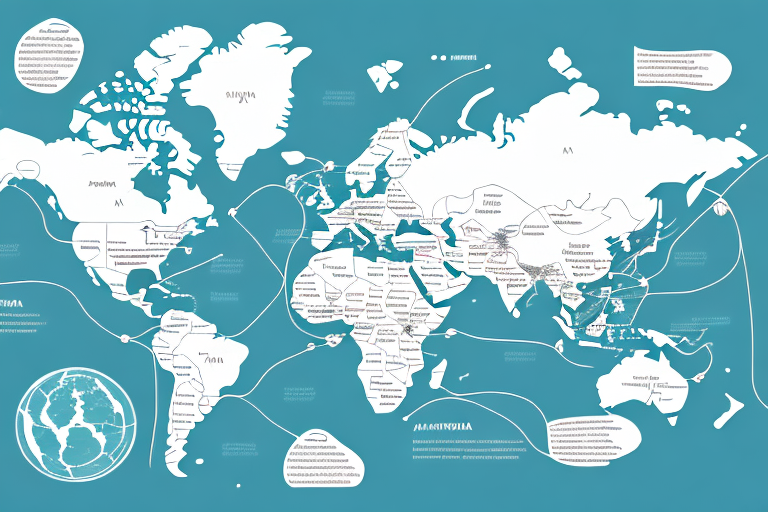How Much Should You Charge for Delivery Per Mile? A Comprehensive Guide
If you run a business that offers delivery services, determining the right price to charge per mile is crucial for profitability and competitiveness. This comprehensive guide covers all the essential factors you need to consider when setting your delivery fees. From understanding the impact of distance on delivery costs to analyzing your competition and leveraging technology to streamline your pricing process, you'll find detailed insights to help you make informed decisions about your delivery fees.
Key Factors Influencing Delivery Fees
Type of Products and Handling Requirements
The nature of the products you deliver significantly impacts your delivery costs. Perishable items such as food or pharmaceuticals require refrigerated transportation, increasing both operational costs and delivery fees. Similarly, fragile items need specialized packaging and handling, which can add to your expenses. Understanding the specific needs of the products you handle allows you to price your delivery services accurately.
Distance and Route Optimization
Distance is a primary determinant of delivery costs. Longer distances not only consume more fuel but also require more time and labor. Efficient route planning can mitigate some of these costs. Utilizing route optimization software can help reduce mileage and time, thereby lowering your overall delivery expenses. According to the Bureau of Transportation Statistics, optimizing delivery routes can reduce transportation costs by up to 20%.
Weight, Size, and Special Equipment Needs
The weight and size of the items being delivered affect fuel consumption and vehicle maintenance costs. Heavier and bulkier items may require larger vehicles, which are more expensive to operate. Additionally, delivering items that require special equipment, such as forklifts or climate-controlled trucks, can further increase your delivery fees.
Pricing Strategies for Delivery Services
Flat-Rate vs. Variable Pricing
One of the fundamental decisions in pricing your delivery services is choosing between flat-rate and variable pricing models. A flat-rate fee simplifies the pricing structure for customers and can be easier to manage. However, it may not accurately reflect the varying costs associated with different delivery scenarios.
On the other hand, a variable pricing model allows you to adjust fees based on specific factors such as distance, weight, and delivery speed. This approach can provide a more accurate reflection of your costs and potentially increase your profitability.
Cost-Plus Pricing and Competitive Benchmarking
Cost-plus pricing involves calculating the total cost of delivery and adding a markup to ensure profitability. This method ensures that all expenses are covered and a consistent profit margin is maintained.
Competitive benchmarking involves analyzing what your competitors are charging for similar delivery services. By comparing your pricing with industry standards, you can position your services competitively while ensuring you cover your costs. According to a report by Statista, businesses that regularly benchmark against competitors can improve their pricing strategies by 15% on average.
Calculating Your Delivery Costs
Understanding Cost per Mile
Calculating your cost per mile is essential for setting accurate delivery fees. This calculation should include all expenses such as fuel, vehicle maintenance, insurance, and driver wages. For example, if your total monthly delivery costs amount to $10,000 and you travel 5,000 miles in a month, your cost per mile would be $2.
Incorporating Additional Expenses
Beyond basic operational costs, additional expenses such as tolls, parking fees, and taxes should be factored into your cost per mile calculation. Additionally, consider indirect costs like administrative expenses and marketing when determining your overall delivery pricing.
Adjusting Fees Based on Order Volume and Frequency
Offering Discounts and Subscription Models
Rewarding high-volume customers with discounts or implementing subscription models can encourage repeat business and loyalty. For instance, offering a 10% discount for customers who place more than ten orders per month can incentivize higher order volumes.
Partnering for Cost Efficiency
Collaborating with other businesses or delivery services can help reduce costs through shared resources. For example, partnering with a local courier service to handle deliveries during peak times can optimize your delivery network and lower your expenses.
Outsourcing Delivery Services
Pros and Cons
Outsourcing delivery to third-party providers can offer benefits such as reduced operational costs, increased efficiency, and access to advanced logistics technology. However, it may also present challenges like less control over the delivery process and potential communication issues.
Choosing the Right Partner
When selecting a third-party delivery provider, consider factors such as reliability, coverage area, pricing structure, and customer service quality. Conducting thorough research and requesting references can help you find a partner that aligns with your business goals.
Marketing Your Delivery Rates
Promoting Competitive Pricing
Highlighting your competitive delivery rates can attract cost-conscious customers. Use your website, social media channels, and marketing materials to showcase your pricing structure and emphasize the value you offer.
Using Delivery Fees as a Selling Point
Position your business as a cost-effective and reliable option by emphasizing your competitive delivery fees. For example, marketing campaigns can focus on “Free Delivery for Orders Over $50” or “Affordable Same-Day Delivery Options.” This approach can differentiate your services from competitors and attract a loyal customer base.
Common Mistakes to Avoid
Underestimating Costs
Failing to accurately calculate all delivery-related expenses can lead to underpricing and reduced profitability. Ensure that all costs, including indirect expenses, are accounted for in your pricing model.
Overcharging or Inflexible Pricing
Setting delivery fees too high can deter potential customers, while inflexible pricing models may fail to accommodate varying customer needs. Strive for a balance where your pricing is both competitive and reflective of your costs.
Neglecting Regular Fee Reviews
Market conditions, fuel prices, and operational costs can change over time. Regularly reviewing and adjusting your delivery fees ensures that your pricing remains accurate and competitive. Implementing quarterly reviews can help you stay ahead of cost fluctuations.
Analyzing the Competition: Benchmarking Your Delivery Rates
Analyzing your competitors’ delivery fees is essential for maintaining a competitive edge. Research what similar businesses in your area are charging and compare it to your own pricing structure. This analysis can help you identify whether you need to adjust your rates to stay competitive or if you can position your services as premium offerings with added value.
According to a study by McKinsey & Company, businesses that regularly benchmark against competitors can achieve up to a 10% increase in market share by fine-tuning their pricing strategies.
Leveraging Technology and Marketing
Using Technology to Streamline Pricing
Technology can significantly enhance the efficiency of your delivery pricing process. Implementing software solutions that automatically calculate cost per mile, integrate with your e-commerce platform, and manage invoicing can reduce administrative burdens and minimize errors. Tools like route optimization software and delivery management systems can help streamline operations and provide real-time data for informed decision-making.
Marketing Your Competitive Rates
Effective marketing strategies can communicate your competitive delivery rates to a broader audience. Utilize search engine optimization (SEO) to ensure your delivery services appear prominently in search results. Additionally, leverage social media advertising, email marketing, and content marketing to highlight your affordable and reliable delivery options.
In conclusion, setting your delivery fees is a multifaceted process that requires careful consideration of various factors, including operational costs, competitive pricing, and market demand. By following the guidelines in this comprehensive guide, you can develop a pricing structure that accurately reflects your costs, offers competitive rates to your customers, and positions your business for long-term success.






















